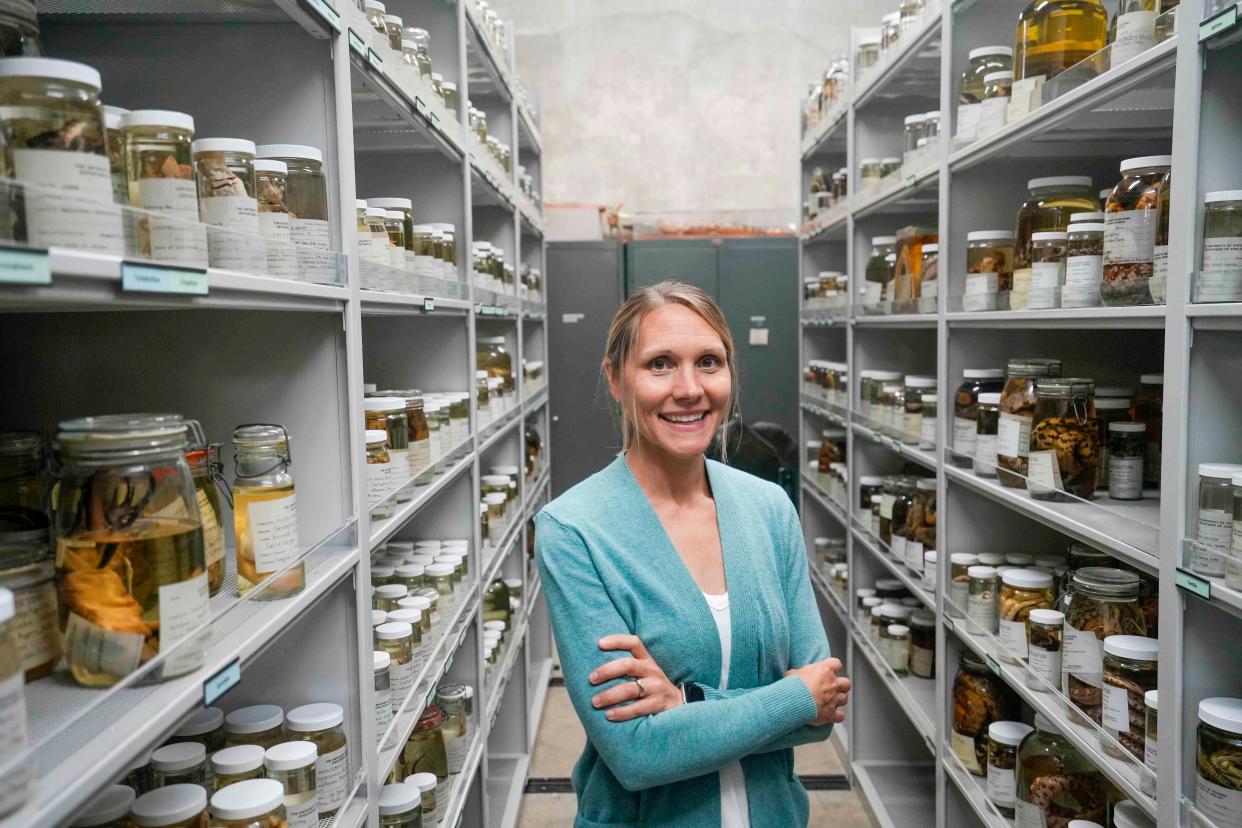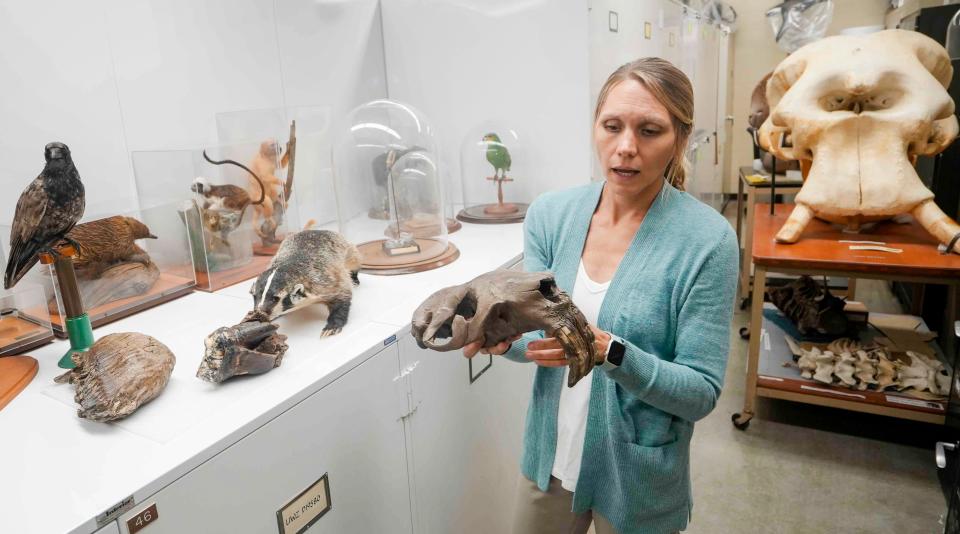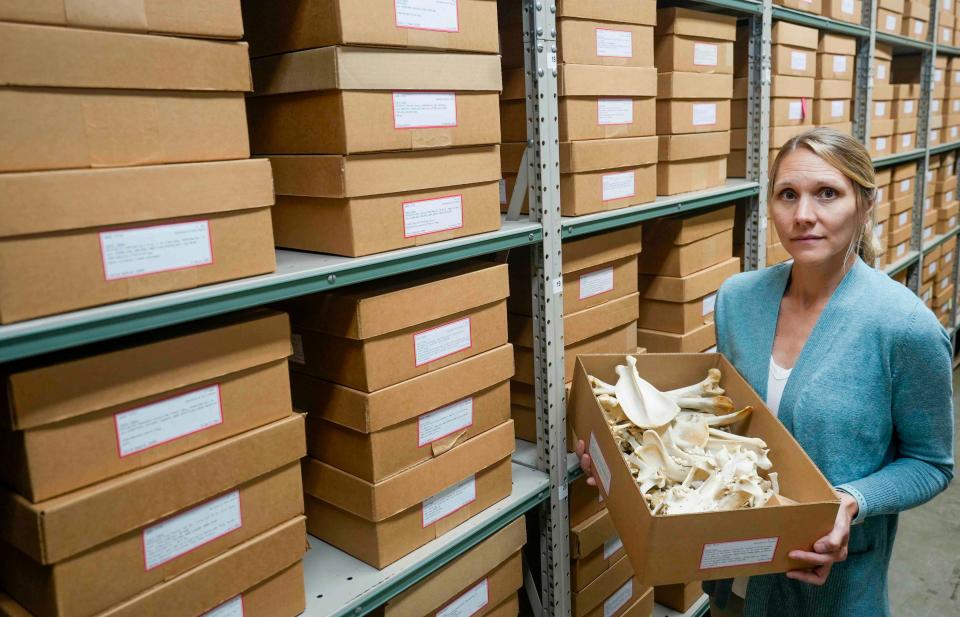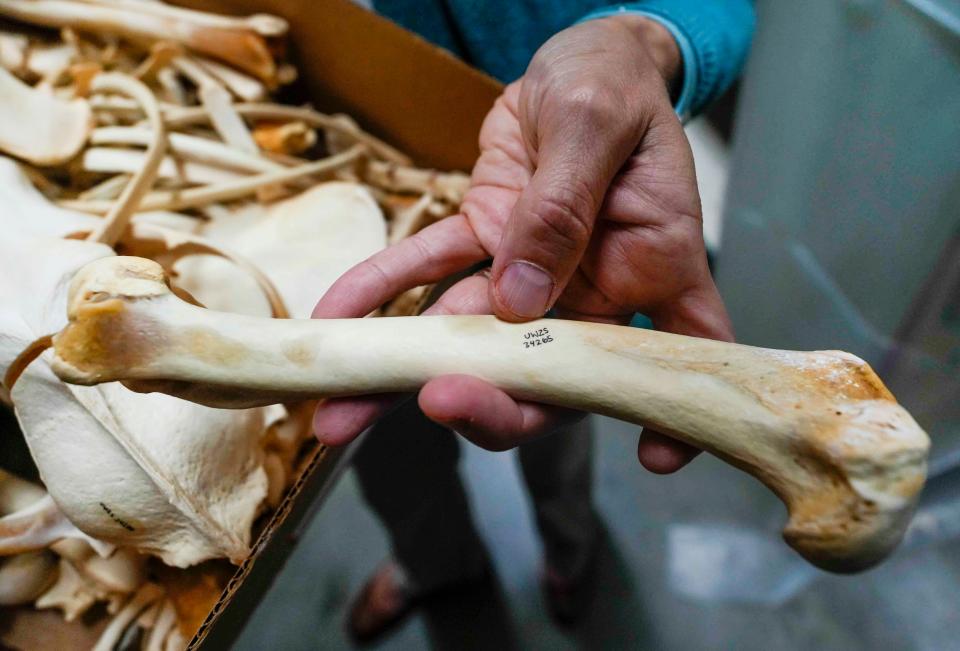UW curator handles tours, teaching, events, exhibitions. But she's happiest working with her bone collections.

Laura Monahan's gifts go far beyond just the bare bones.
As the associate director and curator of osteology — bones and skeletons — for the University of Wisconsin-Madison Zoological Museum, she manages outreach programs, exhibitions, specimen collections, internships, tours, events, skeleton collections, grant writing and fundraising.
Monahan has worked at the museum for 17 years. In recognition of her hard work and dedication, UW-Madison awarded her a 2023 Academic Staff Excellence award. Recipients are chosen based on their exceptional service and contributions to the university.
“She’s the core — the heart — of the museum,” said Jason Miszaniec, a research associate and museum scientist. “It only functions because (Monahan) puts in so many hours.”
The museum is a national center for research, education
The zoological museum began collecting specimens in 1848, the year Wisconsin became a state. Although not open to the public, it has been a national center for research and education. Its mission is to preserve, study, and understand animals from Wisconsin, the Midwest, and other parts of the world. Curators collect specimens and document biological diversity. This helps researchers track how species change over time.

The museum currently houses 750,000 specimens of birds, mammals, reptiles, amphibians and fish. It is a state and federal repository for endangered species. Some of the animals are extinct. For example, the museum boasts a 13,000-year-old skull from a giant beaver that researchers from all over come to see.
The collection also includes finch skeletons from the Galapagos Islands that were famously studied by Charles Darwin. In the classroom, UW biology students read about Darwin and natural selection in introductory textbooks. In the lab, they can examine Darwin’s finches firsthand.
“To be able to see them in real life is really, really interesting,” Monahan said. “It’s a neat way to show biology to students.”
Zoological museums are historically underfunded
During her time with the museum, Monahan has secured more than $800,000 from donors and grant agencies to support operations. It is a significant feat in that zoological museums are historically underfunded.
“She works really hard to create a network of people who are willing to support the museum,” said Emily Halverson, a collections manager for the museum. “With her knowledge and background, she’s able to justify and talk about why the museum is so important.”
The money raised has been used to help upgrade what Monahan calls the “woefully out-of-date” space. The room where curators prepare specimens dates to 1971 and is now being renovated to meet current safety standards.

The museum also has used the money to purchase modern, powder-coated steel museum cabinets, which help protect specimens from light, dust, temperature and moisture changes, and infestations from pests, like spiders or beetles.
Additionally, special shelves have been purchased to significantly increase the amount of storage space.
The upgrades are essential. About 1,000-2,000 new specimens are added to the collection every year, and the curators rarely turn away new samples.
“We haven’t stopped (collecting) yet, and we’ve been told that we’re not getting more space in this building,” said Monahan.

The zoological museum has three full-time staff members and relies heavily on volunteers, interns and adjunct curators. The team identifies, cleans, processes, catalogs and curates specimens, which can take several years from start to finish.
“It (the staff) is not as large as it used to be, but we make it work,” said Monahan. “It’s that team working together that really makes a museum with many specimens and few staff actually function.”
Monahan is at the heart of it all
According to Miszaniec, maintaining the museum is an enormous effort, and Monahan often puts in long hours and works weekends. But Monahan said that she loves the work. Her favorite part is operating behind the scenes.
“Most museums are probably only ever going to put 5 to 10% of their collections on display,” explained Monahan. “But behind the scenes, there’s 95% of what they have … That's really what I love.”
She also enjoys collecting specimens, working with the museum’s 20,000 skeletons and teaching students about the importance of museums.
“I’m excited about museums, and I like to introduce them to other people, and hopefully get them excited about museums, too,” said Monahan.
Halverson said that Monahan “is at the heart of it all," so much so that when researchers come, they're not just interested in the specimens. "People come into the museum, in part, to see her.”
This article originally appeared on Milwaukee Journal Sentinel: University of Wisconsin gives museum curator award for service

